When you attend culinary school, you’ll most likely study basic techniques that can serve as foundational stepping stones in your journey to becoming a professional chef! One of the most intricate processes culinarians discover is the Maillard reaction—coined by the early twentieth-century French chemist, Louis Camille Maillard.
We’ll dive into the details soon, but in short, this is considered “cooking alchemy” that curates pungent flavors, colors, and aromas. If you’re curious about how this chemical reaction works, keep on reading!
What Is a Maillard Reaction?
You might witness the Maillard reaction work its magic when you brown a monstrous steak on a piping hot skillet and the color slowly transforms to golden brown (a.k.a. the non-enzymatic browning reaction). This chemical occurrence ignites when amino acids and/or proteins interact with carbohydrates of reducing sugars. When heat is thrown into the equation, a blast of new aromas and tastes ensue.
It’s important to note that different foods produce various flavor compounds, so the reaction may lead to a wide range of results—which include the taste associated with roasted coffee, baked bread, malted barley, or even fried onions. This entire metamorphosis is what makes our favorite foods so appealing to human tastebuds, with the effect of making you salivate!
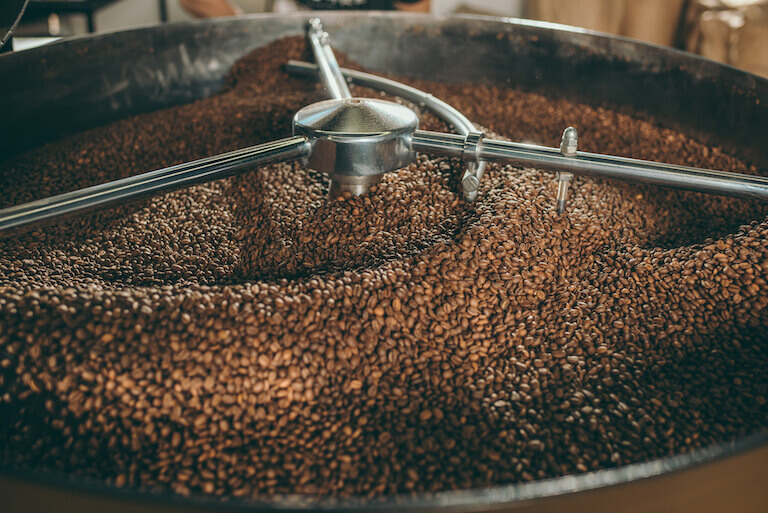
Perfectly roasted coffee beans starting the Maillard reaction in a machine.
How Does the Maillard Reaction Work?
There are several complex variables that come into play to trigger the Maillard reaction. Let’s unpack these key components.
High-Temperature Heat
Chefs usually achieve the first chemical reaction by employing a high-temperature cooking method to dehydrate the food’s surface (although Maillard reaction may begin at room temperature). In turn, this also activates simple sugar, causing the chemical reaction.
The reaction begins when the surface reaches a heat above 285 degrees Fahrenheit. Not every dish calls for this high-temperature method. Boiling, steaming, or poaching result in different tastes that are preferable in many cases.
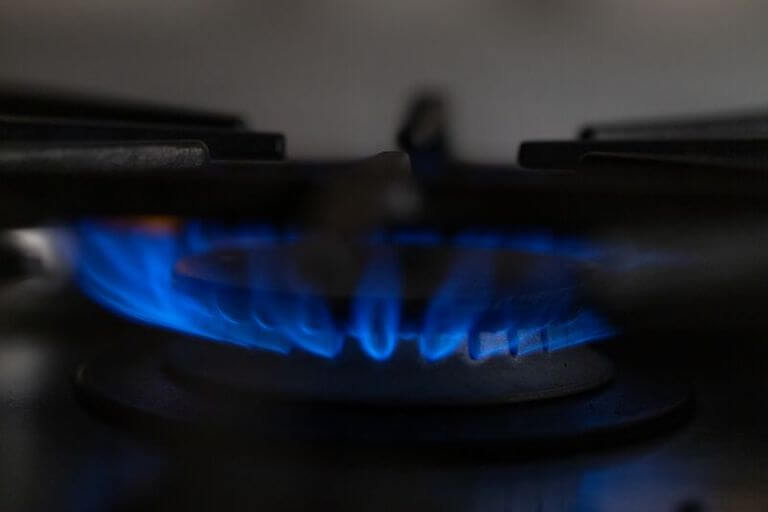
When you do strive for browning, however, keep in mind that heat control is essential. Surface temperatures above 355 degrees will drive different reactions and may lead to food that is burned rather than nicely seared.
Minimal Moisture
From a chemical standpoint, a little moisture is needed in order to activate the Maillard reaction. However, too much can significantly disrupt the process and begin excessive steaming.
Therefore, you might want to consider patting down your food with a paper towel, salting your food, or air drying your ingredients overnight to absorb extra moisture. Taking these precautions, combined with using high heat, will allow that optimal browning to occur.
Extended Time
Have you ever noticed that a perfectly golden brown crust on sourdough bread is usually more desirable than a lackluster loaf that’s not browned properly?
Time is an important factor that magnifies Maillard Reaction—intensifying not only flavor profiles but the aroma too.
If time isn’t on your side, and you’re looking to speed up the process, adding a base to increase pH levels will accelerate this transformation—for example, baking soda.
Maillard Reaction Cooking Examples
There are a myriad of culinary masterpieces professional cooks might achieve through the power of the Maillard reaction. Each dish will usually produce a new flavor and aroma profile, as that distinct interaction between amino acids and sugars always produces different molecules.
Without a doubt, understanding the intricacies of this transformational process is critical for professional chefs. Escoffier students enrolled in the Culinary Arts degree and diploma programs can expect to discover practical skills and basic techniques that may enhance their culinary career, such as the chemistry behind Maillard reaction.
“School can teach you each ingredient’s function and the science and chemistry so that you understand what’s happening. And when something does go wrong, you can recognize it and prevent that from happening in the future.”*
Anne Lanute, Escoffier Executive Chef
However, if you’re looking to experiment with the Maillard reaction in your home kitchen, here are a few dishes to consider.
Perfectly Crusted Pork Chops
One of the many dishes that may benefit from a solid understanding of the Maillard reaction are pork chops. When it comes to meat, it’s important to strike a balance between searing a crisp, dark, flavorful crust and maintaining a juicy interior, as in the method suggested by Serious Eats.
Before you start cooking, season the chops in a mixture of salt and sugar and refrigerate them for at least eight hours. Set the pork on a baking sheet and place in an oven set to 250 degrees. Cook for about 35 minutes, checking for an internal temperature of 110 degrees.
Then, it’s time to remove the meat from the oven and apply the sear. Place oil in a skillet and set over high heat, waiting for it to begin to smoke. Set the pork chops in the skillet and cook for about a minute and a half, or until they start browning. Add a sliced shallot, sprigs of thyme, and butter to the mix to cook for another two minutes, forming a delicious crust. Rest the pork chops for a few minutes, and pour the hot pan drippings over the top before serving.
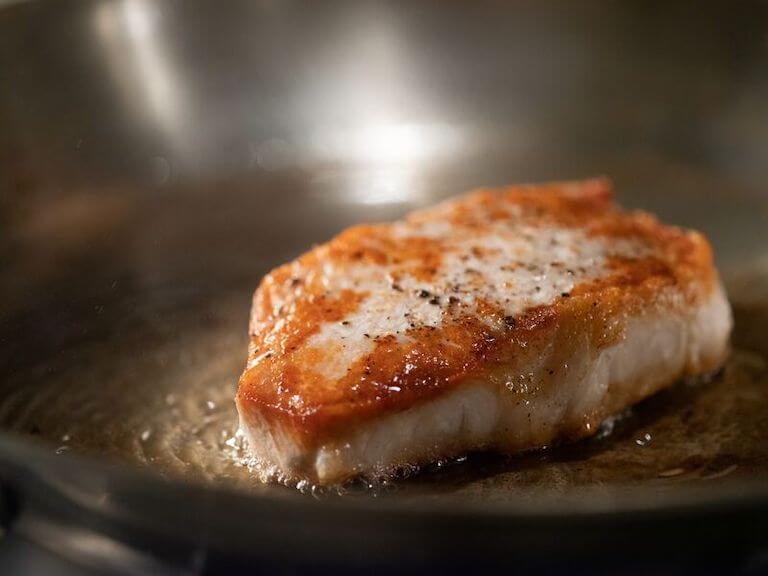
Pork chops utilize the Maillard reaction to become perfectly seared while still juicy inside.
Roasted Farm-to-Table Veggies
The same chemical reaction may serve you well if you’re craving roasted, farm-to-table veggies. You’ll most likely expect a perfect crisp on the outside and tenderness on the inside! While cooking at lower temperatures risks mushiness, it’s helpful to keep the veggies a similar size while chopping for even cooking.
You might also want to consider dousing the veggies in a light coat of olive oil to avoid crowding them too close together. Then, set the oven to a high temperature, around 450 degrees, to get the Maillard reaction working. Roast for 35 to 45 minutes, giving the vegetables a stir or two. The heat will also lead to pleasant caramelization for carbohydrate-heavy root vegetables like carrots.
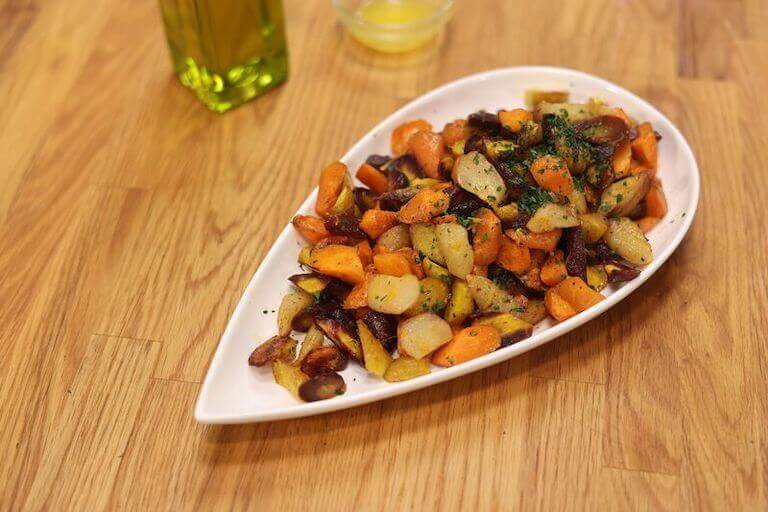
Roasted veggies like these carrots turn out both tender and crisp with the Maillard reaction.
Try the Maillard Reaction Yourself
In short, the Maillard reaction is a full sensory experience when it comes to cooking—it’s why your favorite foods like perfectly seared salmon, crunchy bread rolls, or golden brown french fries taste and smell so delicious.
As a culinary arts student at Escoffier, you can begin to discover how to use this cooking chemistry to your advantage throughout a wide variety of dishes. To find out more about Escoffier’s programs, contact us today.
Enjoyed this article? Check out these ones next:
- How to Make Chicken Francaise
- How to Cook Spaghetti Squash – Autumn Recipe
- Coconut Milk: Health Benefits and Why to Cook with It
*Information may not reflect every student’s experience. Results and outcomes may be based on several factors, such as geographical region or previous experience.
This article was originally published on December 14, 2016, and has since been updated.

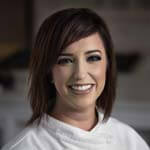 “School can teach you each ingredient’s function and the science and chemistry so that you understand what’s happening. And when something does go wrong, you can recognize it and prevent that from happening in the future.”*
“School can teach you each ingredient’s function and the science and chemistry so that you understand what’s happening. And when something does go wrong, you can recognize it and prevent that from happening in the future.”*

